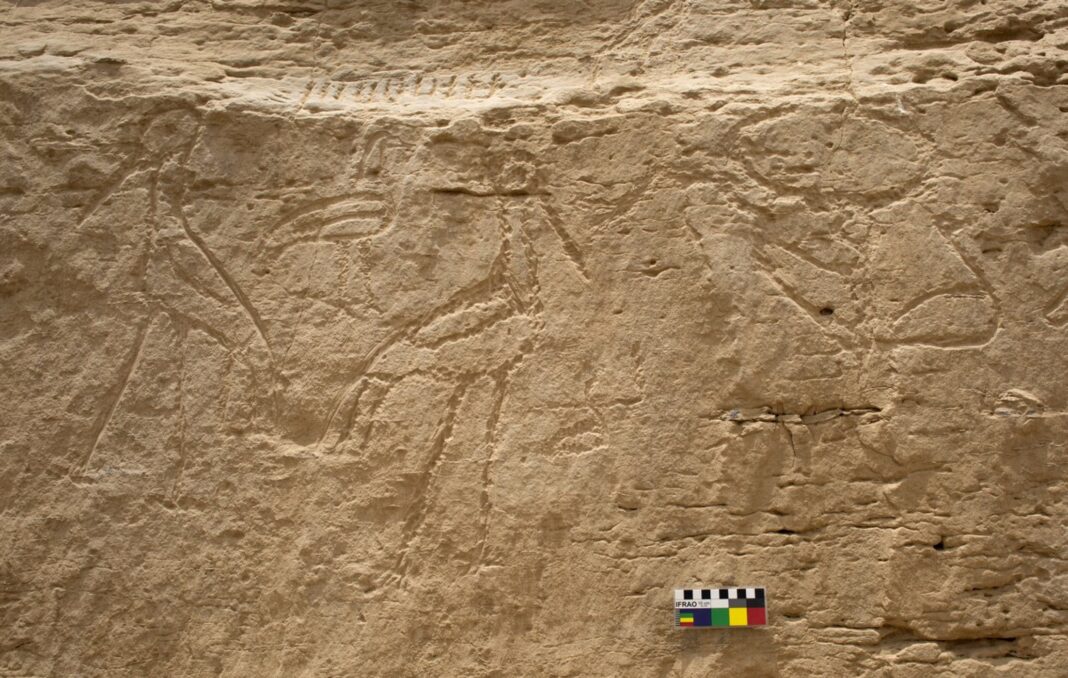Archaeologists have discovered a “billboard” of hieroglyphs carved into the rocks near the Egyptian village of El-Khawy. The symbols, which show a message related to the cosmos, are the earliest monumental (large) hieroglyphs known, dating back around 5,200 years.
“This newly discovered rock art site of El-Khawy preserves some of the earliest — and largest — signs from the formative stages of the hieroglyphic script and provides evidence for how the ancient Egyptians invented their unique writing system,” John Darnell, a professor at Yale University who co-directs the expedition that discovered the rock art, said in a statement from Yale University. The Egyptian antiquities ministry also issued a statement today (June 22) announcing the discovery.
The archaeologists also discovered another carving, this one showing a herd of elephants, created sometime between 4000 B.C. and 3500 B.C. One of the adult elephants in the scene was drawn with a little elephant inside its body — “an incredibly rare way of representing a pregnant female animal,” Darnell said in the Yale statement. [Photos: 5,000-Year-Old Hieroglyphs Discovered in Sinai Desert]
Only a few similar scenes are known from Egypt. For example, a vase previously found at the site of Abydos depicts a pregnant hippopotamus, Darnell told Live Science.
In this rock carving, a little elephant is shown inside an adult elephant, an indication that the animal is pregnant. It was carved sometime between 4000 B.C. and 3500 B.C.
Political message
The four early hieroglyphic signs were carved around 3250 B.C. And the carvers seemed to be making a statement, as the symbols are about 70 centimeters (27.5 inches) high and had “abright, almost white, color against the patina of the surrounding brown stone” after they were freshly carved, Darnell told Live Science.
“In the modern world, this would be akin to seeing smaller text on your computer screen and then suddenly seeing very large ones made the same way only on a billboard,” Darnell said in the Yale statement.
One of the signs shows a bull’s head on a short pole, a symbol found at other Egyptian sites. “The bull’s head appears to be a symbol of royal power during the formative phases of the Egyptian state,” Darnell told Live Science.

























